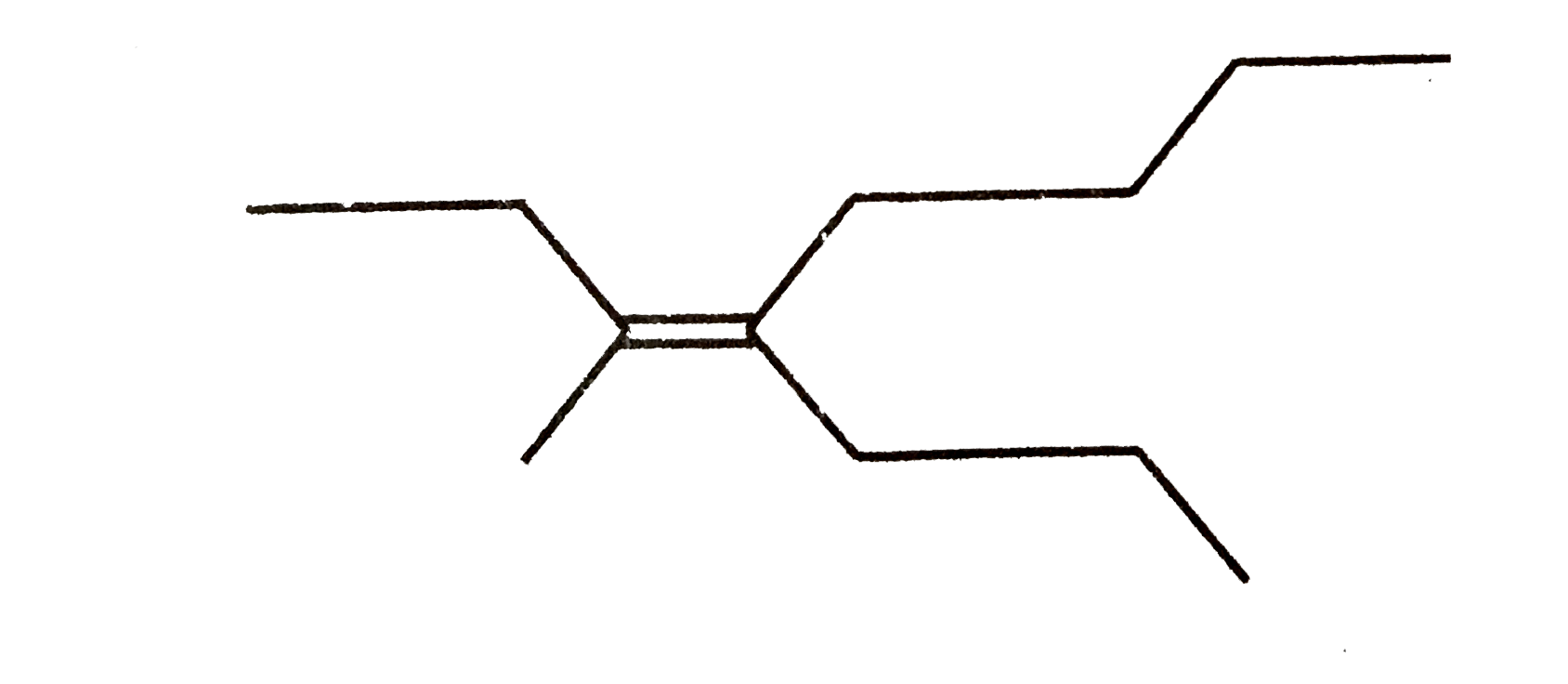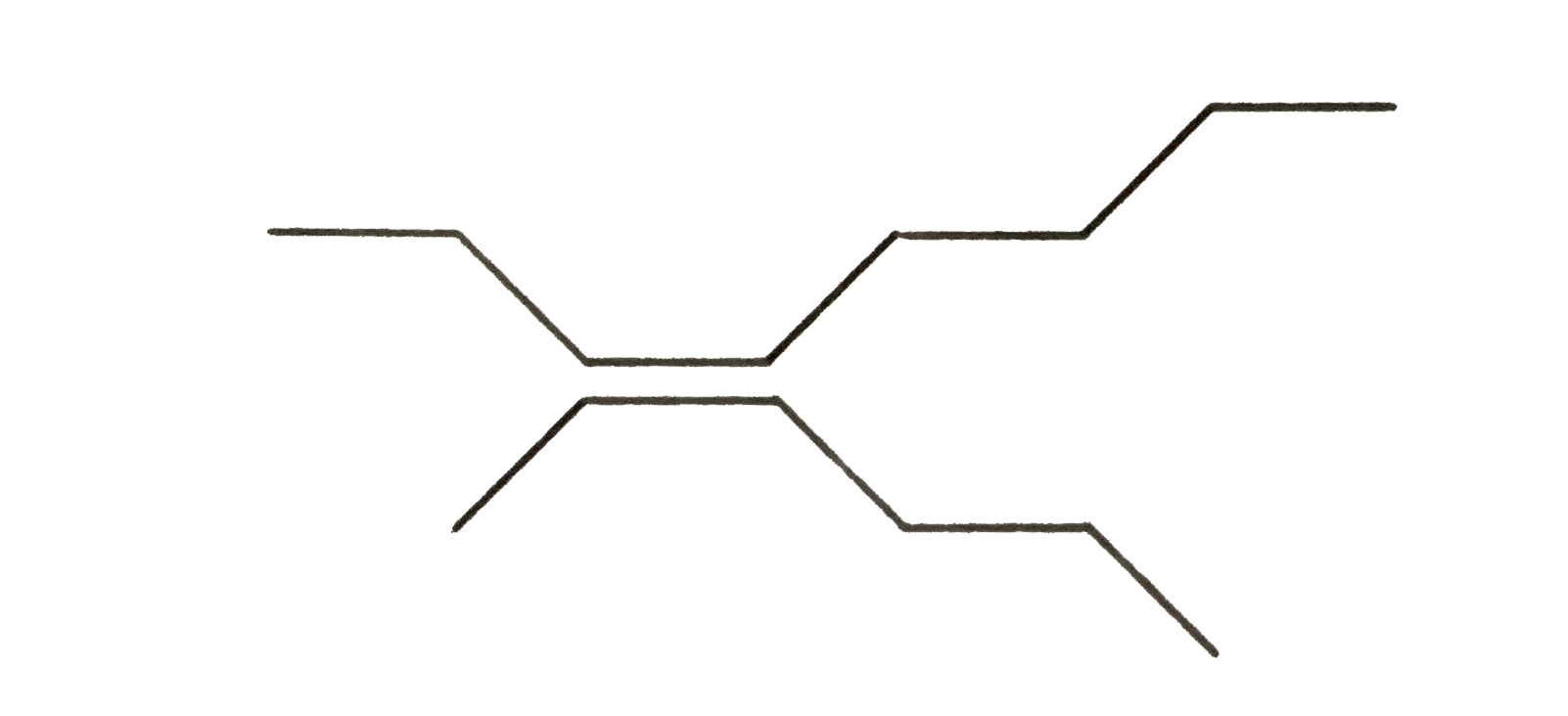An olefinic compound on reductive ozonolysis produces formaldehyde, acetaldehyde and 1, 3-propanedial. The IUPAC name of the alkene is
1, 4-Hexadiene
2-Methyl-1, 3-pentadiene
1, 2-Hexadiene
None of these
The correct Answer is:A
To determine the IUPAC name of the alkene that produces formaldehyde, acetaldehyde, and 1,3-propanediol upon reductive ozonolysis, we can follow these steps:
1. Understand the Products: The products of the reductive ozonolysis are:
- Formaldehyde (HCHO)
- Acetaldehyde (CH3CHO)
- 1,3-Propanediol (which is HOCH2CHOHCHO)
2. Identify the Structure of the Products:
- Formaldehyde is a 1-carbon aldehyde.
- Acetaldehyde is a 2-carbon aldehyde.
- 1,3-Propanediol has two aldehyde groups at the ends, indicating that the original alkene likely had a structure that could lead to these products upon cleavage.
3. Determine the Alkene Structure:
- The ozonolysis reaction involves breaking the double bond of the alkene and forming carbonyl groups (C=O).
- The presence of both formaldehyde and acetaldehyde suggests that the alkene has a structure that allows for the formation of these aldehydes.
4. Construct Possible Alkene:
- Given the products, we can deduce that the alkene must have a structure that allows for the formation of these carbonyl compounds.
- The alkene must be symmetrical to produce both formaldehyde and acetaldehyde.
5. Visualize the Alkene:
- The alkene can be represented as follows:
- CH2=CH-CH2-CH=CH2
- This structure can be rearranged to show how it would break down into the products.
6. Number the Carbon Chain:
- Number the carbon chain from one end to determine the positions of the double bonds.
- The double bonds are located at the 1st and 4th positions.
7. IUPAC Naming:
- The IUPAC name for the alkene with double bonds at positions 1 and 4 is 1,4-hexadiene.
8. Conclusion:
- Therefore, the IUPAC name of the alkene that produces the given products upon reductive ozonolysis is 1,4-hexadiene.
Final Answer:
The IUPAC name of the alkene is 1,4-hexadiene.
- Formaldehyde (HCHO)
- Acetaldehyde (CH3CHO)
- 1,3-Propanediol (which is HOCH2CHOHCHO)
- Formaldehyde is a 1-carbon aldehyde.
- Acetaldehyde is a 2-carbon aldehyde.
- 1,3-Propanediol has two aldehyde groups at the ends, indicating that the original alkene likely had a structure that could lead to these products upon cleavage.
- The ozonolysis reaction involves breaking the double bond of the alkene and forming carbonyl groups (C=O).
- The presence of both formaldehyde and acetaldehyde suggests that the alkene has a structure that allows for the formation of these aldehydes.
- Given the products, we can deduce that the alkene must have a structure that allows for the formation of these carbonyl compounds.
- The alkene must be symmetrical to produce both formaldehyde and acetaldehyde.
- The alkene can be represented as follows:
- CH2=CH-CH2-CH=CH2
- This structure can be rearranged to show how it would break down into the products.
- Number the carbon chain from one end to determine the positions of the double bonds.
- The double bonds are located at the 1st and 4th positions.
- The IUPAC name for the alkene with double bonds at positions 1 and 4 is 1,4-hexadiene.
- Therefore, the IUPAC name of the alkene that produces the given products upon reductive ozonolysis is 1,4-hexadiene.
The IUPAC name of the alkene is 1,4-hexadiene.
Topper's Solved these Questions
Similar Questions
Knowledge Check
Give the IUPAC name of the alkene
 AZ−3−Methyl−4−propyloct−3−eneBE−3−Methyl−4−propyloct−3−eneCE−4−Butyl−3−Methylhept−3−eneDE−2−Ethyl−3−propylhept−2−ene
AZ−3−Methyl−4−propyloct−3−eneBE−3−Methyl−4−propyloct−3−eneCE−4−Butyl−3−Methylhept−3−eneDE−2−Ethyl−3−propylhept−2−eneBut - 2 - yne on reductive ozonolysis produces
Abutane - 2, 3 - dioneBbutanoneCpropanoneDboth propanone and butanoneThe IUPAC name of the following alkene

isA4−ethyl-2,2-dimethyl-3.5-bis(1−methylethyl)hept−3−eneB3−(1,1−dimethylethyl)−4,5−diethyl-2,6-dimethylhept-3-eneC4,5−diethyl-2,2,6-trimethyl-3-(1-methylethyl)hept-3-eneD3−t-butyl-4-ethyl-5-isopropyl-2-methylhept-3-ene
Name an alkene which on reductive ozonolysis produces only acetone.
View Solution1-Butyne on reductive ozonolysis gives.
View SolutionReductive ozonolysis of benzene produces
View SolutionAn alkene, on ozonolysis gives formaldehyde and acetaldehyde. The alkene is :
View SolutionAn alkene, on ozonolysis gives formaldehyde and acetaldehyde. The alkene is :
View Solution

